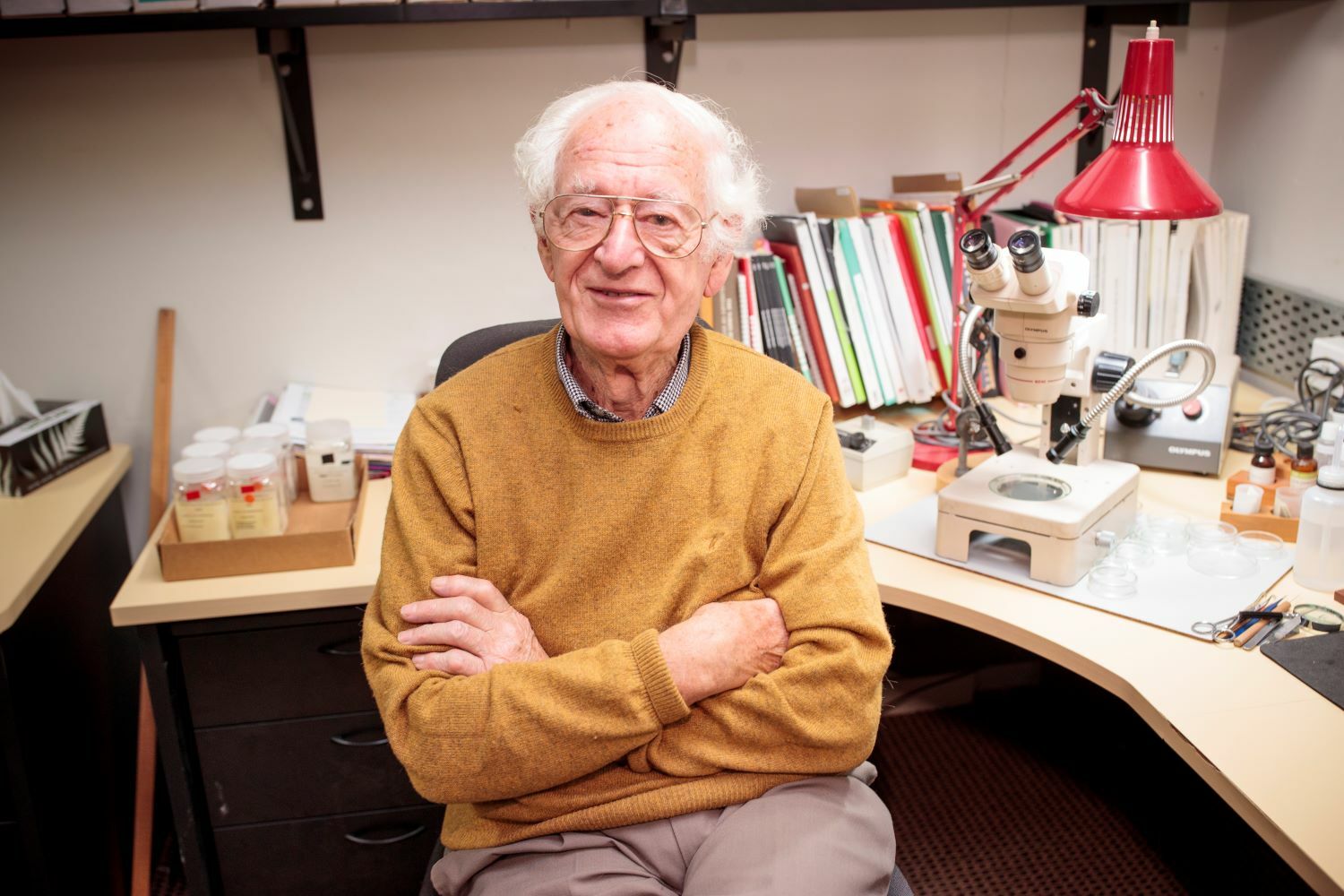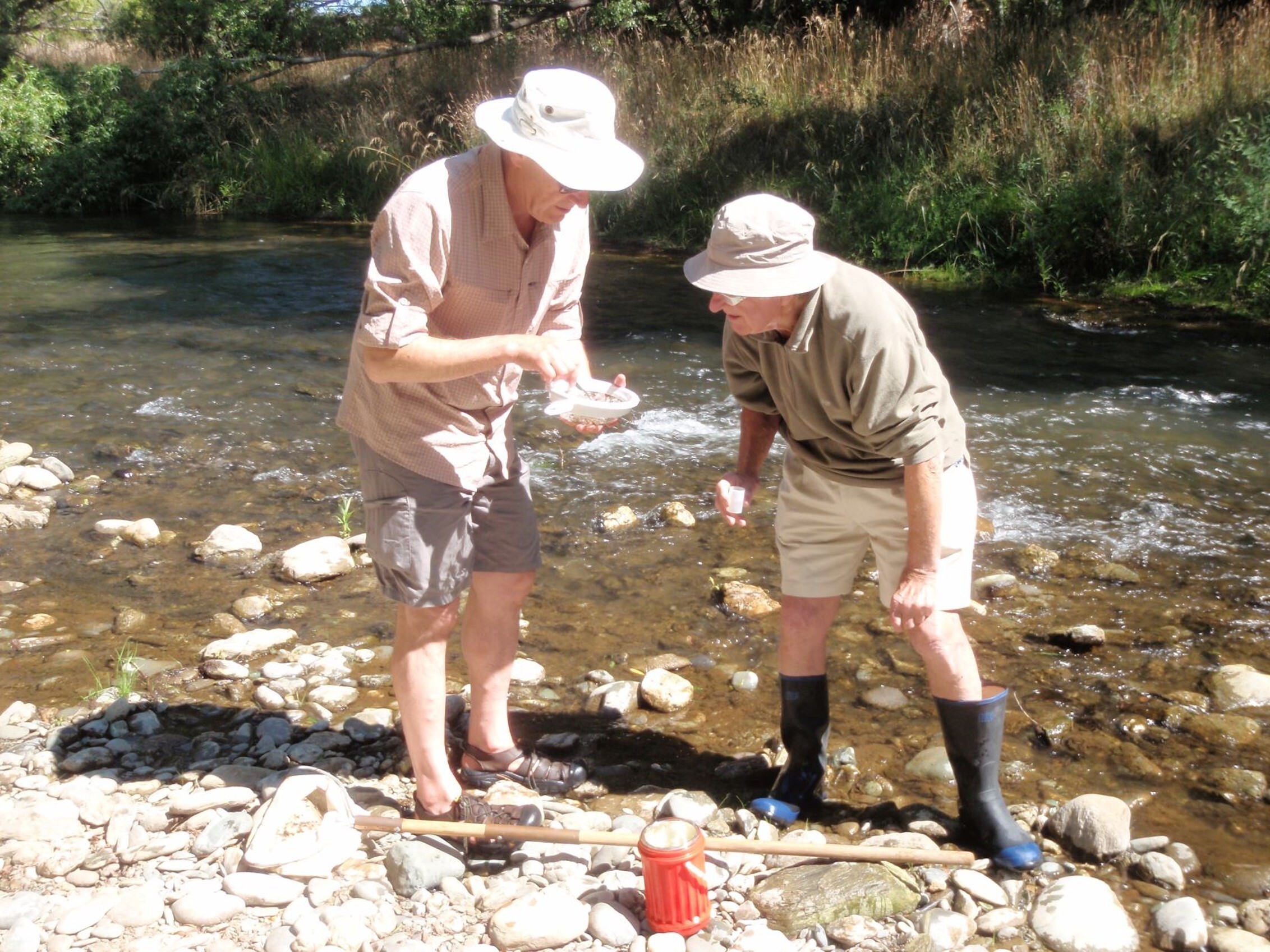Terry Hitchings has left an enduring legacy at Canterbury Museum after his more than three decades of tireless research.
Terry, who died in February at the age of 96, was a Research Fellow and a much-loved member of the Museum team. His lifelong curiosity and thirst for knowledge made the Museum a perfect home.
From 1990 until just a few weeks before his death, Terry collected and identified about 50,000 mayfly specimens from across Aotearoa New Zealand and overseas. He described 20 previously unknown mayfly species. This impressive legacy will be a valuable research tool for many decades to come.
His association with Canterbury Museum began in 1954 when he joined a four-week research expedition to Fiordland funded by the Museum. Terry helped survey previously unmapped areas of Fiordland and searched for any signs of kākāpō. It was tough work in a remote location. They had to hack through thick bush, were besieged by sandflies and there were many steep climbs. But they were surrounded by birds and the wild bush. Wekas would walk into their tents.

Terry led the second Museum expedition to Fiordland in 1958. It took 3 days to carve a track through the bush to a base camp at 731 metres. Efforts to map the area were hindered by heavy rain on 13 days of the 14-day expedition. A film of the trip shows Terry and the team flying down to Fiordland in an RNZAF plane, clambering down steep waterfalls, setting off smoke grenades to guide in a plane dropping supplies by parachute, baking bread over a fire, surveying mountain tops and examining feathery remains. They depart on a bright yellow waterplane that uses a Fiordland lake as a runway.
When he wasn’t surveying mountains in the wilderness, Terry was a teacher. He taught at Christchurch West High School before becoming head of science at Riccarton High School in 1959. He became principal of the school in 1967 and stayed in the role until 1987.

His return to Canterbury Museum was sparked by a chance meeting in the mountains of the Craigieburn Range in the 1980s. He was fly fishing when he met two entomologists, John Ward of Canterbury Museum and Brian Patrick of Tūhura Otago Museum, who were collecting insects.
They got chatting and Terry was fascinated by their enthusiasm and dedication to the task. A few days later, he visited the Museum and saw the vast collection of New Zealand insect species that had been gathered by generations of biologists. Collecting the insects was only one part of the job, there was more work to be done cataloguing the collection and identifying new species. Terry was up for the job. He would work 2 days a week at the Museum for the next 30 years. This was his second career.
In later years, the project became a family affair, with Terry joined by his son Tim and his grandson Richard.
Their meticulous work over many decades created a unique archive of insect life in Aotearoa New Zealand. Researchers will be able to use the data to compare mayfly populations across the decades, providing valuable insights into environmental change and habitat degradation.
But his research work has left a second legacy for the Museum. He is remembered by Museum staff as a true gentleman who dedicated his life to public service.
Museums are community places and Terry Hitchings was a community man. We salute him.






